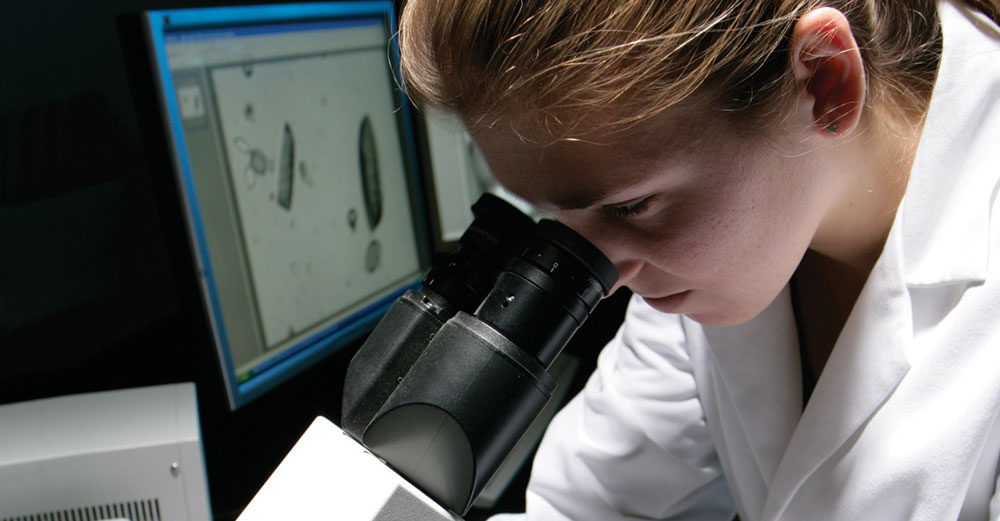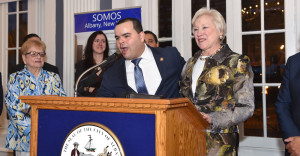
University-based research is one of the strongest economic generators out there, and SUNY supplies the proof with more than 100 new technologies every year. But how do ideas make their way to production and market? Through partnerships and funding that help get developers past the period in the innovation process known the Valley of Death, where promising ideas wither due to lack of funding.
The solution to this problem within the SUNY system is TAF–the Technology Accelerator Fund– that makes strategic investments to develop innovation/inventions to make them attractive to private investors. The biggest challenge faced by any new inventor is the difficultly they face in obtaining funding to bring their products to market. TAF helps close that gap.
Since being launched in 2011, TAF has invested in 32 technologies ranging from fake eyes for glaucoma screening to smart windows for energy efficiency. In that time, TAF has also invested over $1.5 million for SUNY-led innovations. In 2015, a total of $275,000 was raised to help advance the development of several research initiatives. How did these come about?
The Technology Accelerator Fund helps faculty inventors and scientists turn their ideas into market-ready technologies by making small, strategic investments to accelerate development and commercialization. TAF helps bridge the gap between government sponsored support and a secured licensee or venture-capital support. This intermediate funding, provided by TAF, is essential to bring to market this technology that has potential implications for public benefit. For this reason, many TAF awards target critical research and development milestones – such as feasibility studies, prototyping and testing – which demonstrate that an idea or innovation has commercial potential. TAF funding is awarded through a competitive process and grants help to bridge the gap between market good and public good for SUNY researchers.
Six projects that received TAF investments in 2015 are making remarkable progress on the road from lab to marketplace:
- Replicating a better heart cell for research, University at Buffalo– Dr. Glenna Bett, a biophysicist and Dr. Randal Rasmusson, a bioengineer, created a technique to replace a missing electrical current that is key to the stability of heart tissue. The project will create a system that gives pharmaceutical companies a quicker path for introducing new heart drugs into the market.
- Video game controller that allows the user to manipulate 3-D objects, SUNY Buffalo State– By combining innovative ways to sense and input data into computers, Dr. Tomas Henriques, associate professor of music, has developed a device that elevates interactivity to a new level. The Haptic Controller brings together force feedback, 3-D spatial manipulation, hand-, arm- and wrist-driven motions and simple biofeedback to provide a much more realistic gaming experience.
- New method of diagnosing nerve disease, SUNY Downstate Medical Center– Neurologist Paul Maccabee uses nerve conduction data and computer-based analytics in novel ways to provide a better understanding of nerve damage. The new method will better inform treatment of nerve diseases, including neuropathy.
- Using light to reduce infection risk, Stony Brook University– A multi-disciplinary team led by Annie Rohan, director of pediatric research, is developing a catheter that will use blue LED lights to reduce the likelihood of catheter-related infection after the device is inserted into a patient’s body.
- Automating a time-consuming laboratory process, University at Albany– Rabi Musah, teaching assistant professor of mechanical and aerospace engineering, developed a novel apparatus to monitor gel electrophoresis experiments. The equipment saves time and prevents the loss of valuable – in some cases, priceless – samples.
- Defining drug candidates for blood cell recovery and treating obesity, SUNY Upstate Medical University– Dr. William Kerr discovered that inhibiting an enzyme called SHIP1 could help patients regrow blood cells after chemotherapy, radiation, or bone marrow transplants. Further research indicates that the molecular mechanism may also treat obesity.
These are all great examples of the innovation coming out of SUNY, and there are many more that help us improve our world in numerous ways.



